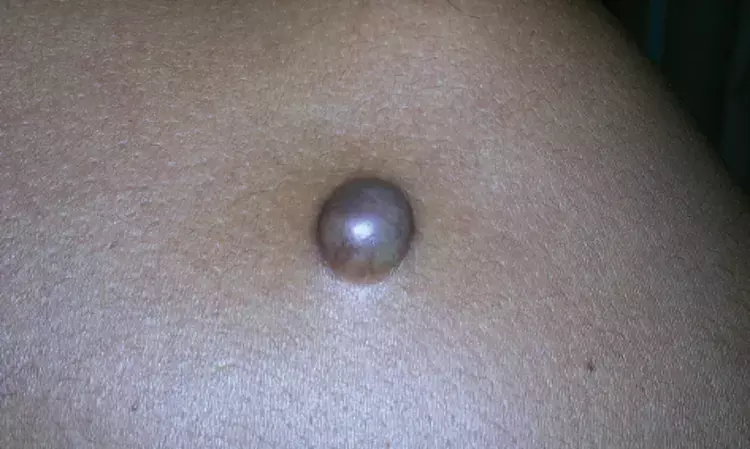- Home
- Medical news & Guidelines
- Anesthesiology
- Cardiology and CTVS
- Critical Care
- Dentistry
- Dermatology
- Diabetes and Endocrinology
- ENT
- Gastroenterology
- Medicine
- Nephrology
- Neurology
- Obstretics-Gynaecology
- Oncology
- Ophthalmology
- Orthopaedics
- Pediatrics-Neonatology
- Psychiatry
- Pulmonology
- Radiology
- Surgery
- Urology
- Laboratory Medicine
- Diet
- Nursing
- Paramedical
- Physiotherapy
- Health news
- Fact Check
- Bone Health Fact Check
- Brain Health Fact Check
- Cancer Related Fact Check
- Child Care Fact Check
- Dental and oral health fact check
- Diabetes and metabolic health fact check
- Diet and Nutrition Fact Check
- Eye and ENT Care Fact Check
- Fitness fact check
- Gut health fact check
- Heart health fact check
- Kidney health fact check
- Medical education fact check
- Men's health fact check
- Respiratory fact check
- Skin and hair care fact check
- Vaccine and Immunization fact check
- Women's health fact check
- AYUSH
- State News
- Andaman and Nicobar Islands
- Andhra Pradesh
- Arunachal Pradesh
- Assam
- Bihar
- Chandigarh
- Chattisgarh
- Dadra and Nagar Haveli
- Daman and Diu
- Delhi
- Goa
- Gujarat
- Haryana
- Himachal Pradesh
- Jammu & Kashmir
- Jharkhand
- Karnataka
- Kerala
- Ladakh
- Lakshadweep
- Madhya Pradesh
- Maharashtra
- Manipur
- Meghalaya
- Mizoram
- Nagaland
- Odisha
- Puducherry
- Punjab
- Rajasthan
- Sikkim
- Tamil Nadu
- Telangana
- Tripura
- Uttar Pradesh
- Uttrakhand
- West Bengal
- Medical Education
- Industry
Dermoscopic features of epidermoid cyst- IJDVL study1

Reference- 1. Behera B, Kumari R, Thappa DM, Gochhait D. Dermoscopic features of epidermoid cyst beyond punctum. Indian J Dermatol Venereol Leprol 2022;88:404-8.
Dermoscopic features of epidermoid cyst- IJDVL study1
Epidermoid cyst is the most common benign cutaneous cyst encountered during dermatological practice. It usually presents as an asymptomatic slow-growing, spherical, smooth, dome-shaped keratin-filled cyst. It can be confused many a times with various benign adnexal and non-adnexal tumours clinically due to its variable size, colour, and consistency. The dermoscopic examination data in this lesion is primarily focused on demonstrating the punctum, which facilitates the diagnosis. Recently a case series describing the dermoscopic features of epidermoid cyst beyond the punctum was published in the Indian Journal of Dermatology, Venereology and Leprology.
A total of 7 patients of skin phototypes IV and V presented with lesion without any punctum being visible clinically or dermoscopically. All the diagnoses were confirmed by histopathology. None of the patients showed any features of rupture, secondary bacterial infection, or calcification at presentation. All lesions were successfully excised without any recurrence.
A cystic consistency with central punctum is usually diagnostic of epidermoid cyst. However, diagnostic dilemma arises when the consistency of the cyst becomes firm or hard with or without tenderness which may be secondary to bacterial infection, inflammation, and calcification. Additionally, lack of punctum and colour variation, especially in darker skin adds on to the dilemma leading to misdiagnosis.
The clinical differentials in these cases were diverse due to morphological variations and heterogeneous colours. In epidermoid cysts, demonstration of a punctum, called the pore sign, facilitates the diagnosis. Other features include white, yellow, and blue homogeneous areas and arborizing vessels. Dermoscopy revealed the punctum in almost 60% cases, even when clinically invisible. In authors experience, the pore sign helps in differentiating facial and scalp epidermoid cysts from trichilemmal cyst. Likewise, in acral areas, the pore sign helps in ruling out phaeohyphomycosis and myxoid cyst. A recent study reported that pore sign, blue-white veil and arborizing vessels were associated with unruptured epidermoid cyst while red lacunae and peripheral branched linear vessels indicated ruptured epidermoid cysts.
In the present series the white homogeneous areas represented keratin, where the yellow colour results from mass effect of concentric layers of laminated keratin, brown homogeneous areas occurred due to increase epidermal melanin and the bluish colour may be attributed to Tyndall effect, as described in apocrine hidrocystoma.
In conclusion, this case series describes some new and diverse dermoscopic features of epidermoid cysts without punctum in skin of colour. Additionally, grey homogeneous areas, pigment networks and rings may be observed in such patients. Thus, an epidermoid cyst without dermoscopic pore sign may mimic various appendageal tumours, and these dermoscopy features may help in making a precise diagnosis.
References
- Behera B, Kumari R, Thappa DM, Gochhait D. Dermoscopic features of epidermoid cyst beyond punctum. Indian J Dermatol Venereol Leprol 2022;88:404-8.
MBBS
Dr Manoj Kumar Nayak has completed his M.B.B.S. from the prestigious institute Bangalore medical college and research institute, Bengaluru. He completed his M.D. Dermatology from AIIMS Rishikesh. He is actively involved in the field of dermatology with special interests in vitiligo, immunobullous disorders, psoriasis and procedural dermatology. His continued interest in academics and recent developments serves as an inspiration to work with medical dialogues.He can be contacted at editorial@medicaldialogues.in.
Dr Kamal Kant Kohli-MBBS, DTCD- a chest specialist with more than 30 years of practice and a flair for writing clinical articles, Dr Kamal Kant Kohli joined Medical Dialogues as a Chief Editor of Medical News. Besides writing articles, as an editor, he proofreads and verifies all the medical content published on Medical Dialogues including those coming from journals, studies,medical conferences,guidelines etc. Email: drkohli@medicaldialogues.in. Contact no. 011-43720751


